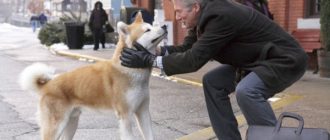On the day of surgery, a long and nervous wait for the pet, and then and taking him home can be very emotional. Many owners are so happy when they take their pet home in safe and sound that they forget to ask questions and even listen instructions from your veterinarian. However, the truth is that caring for your pet at home may be as necessary as she herself surgery, so it’s very important that you know what to expect and understand how best to care for your pet after surgery. This article will shed light on 5 basic steps that you should know. all owners of cats and dogs after any operation.

1. How to prepare for the pet to return home?
Contents
- 1 1. How to prepare for the pet to return home?
- 2 2. What questions should be asked before bringing an animal home?
- 3 3. What behavior is normal during the first 24 hours after surgery?
- 4 4. What symptoms should I look for to understand if something goes wrong after surgery?
- 5 5. The pet seems to have returned to normal. Mean Is it that he has fully recovered?
Your cat or dog is likely to be very I’m grateful if you create a suitable shelter for her in the house, where she can sleep in peace and quiet. It could be room for guests or a box located in a quiet part of the house, preferably so that your pet does not have to climb or go down the stairs. Other members of your family will no doubt want greet the returning pet, but remember that he can be sensitive to noise and excessive attention. If your dog will wear a special collar or collar to prevent licking, then you should make sure that there are no fragile on the floor or valuable items. Cats must stay indoors for at least 1-3 days after anesthesia, so you should make sure that there are no possible escape routes before bringing her home.
The vet will most likely give you some special dietary recommendations and talk about certain foods restrictions after surgery, but in general, the pet is suitable Easily digestible protein from boiled chicken, omelet or white fish. Such a diet will contribute to the quickest healing of the wound and reduce the risk of indigestion.
If possible, then the person who will carry responsibility for caring for animals during rehabilitation period must be present during the training camp, thereby reducing the likelihood that postoperative care instructions from the veterinarian will be misinterpreted or forgotten. It will also give the opportunity for caregivers to confirm that they are ready and will be able to solve all possible problems.
2. What questions should be asked before bringing an animal home?
Regardless of whether your pet was urgently operated on or was just sterilized, you will probably be given some medications from pain or antibiotics. In any case, you should figure out how and when to give these drugs to the pet at home. For example, certain types of medications should always be given along with food, and some tablets need to be crushed – find out have you been given such drugs that fall under these special categories. Usually the required dosage and instructions are indicated on label or recipe description, but make sure you are sure the right dose and frequency of use, otherwise you should Ask your veterinarian in detail. Remember that inappropriate the use or overdose of the drug can cause serious complications.
If your pet has undergone dental treatment, then you You should learn about how you can save the results. When, if the operation was associated with traumatic injury (fracture or rupture of ligaments) or with a disease caused by stress (for example, cystitis in cats), then you will have a good opportunity discuss with your veterinarian ways to prevent such problems in the future.
3. What behavior is normal during the first 24 hours after surgery?
Drowsiness, disorientation and lethargy are all normal. reactions after surgery, especially in old or sick animals. Cats and dogs may be anxious or try to lick. your wounds. Some inflammations and light bleeding may be normal, especially if your pet has had tooth extraction. Anesthetics can cause an animal to lose appetite in throughout the day or so. If you think the pet is experiencing pain or discomfort, always call your veterinarian before independent use of any drugs. Overdose painkillers can damage vital organs your pet.
4. What symptoms should I look for to understand if something goes wrong after surgery?
The following signals must be carefully monitored and reported. to the veterinarian if they occur at any stage of the rehabilitation period:
- frequent and heavy breathing
- vomiting
- heavy bleeding
- pus or other discharge from the wound
- difficulty urinating
- cramps
You should regularly check all wounds and incisions of the animal, to ensure that the sutures are not damaged and the wounds are gradually drag out. Your veterinarian is likely to arrange a second examination a few days after surgery, but if you think healing should go faster then contact and call him ahead of schedule.
5. The pet seems to have returned to normal. Mean Is it that he has fully recovered?
Some pets may recover from the effects. anesthetics exceptionally fast, especially young, healthy and with fast metabolism. However, it is important that you continue follow the instructions of your veterinarian throughout the period recovery because overstrain or excessive excitement may cause internal problems. Many pet owners consider the veterinarian’s recommendations too restrictive or burdensome, especially if he ordered a regular walk with the dog or wear a special collar for a long time. If it’s hard for you manage your pet during the recovery period, then consult consult a veterinarian, but resist the temptation to violate regulations. This may bring your pet back to the operating room. table!






